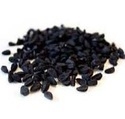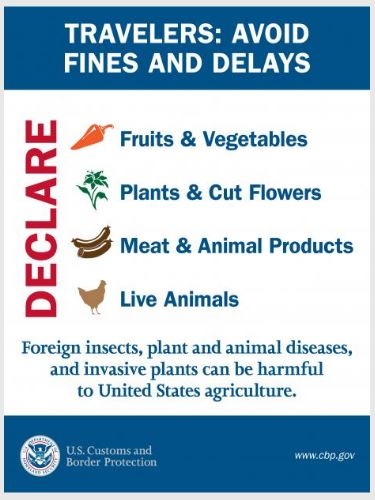
UC Master Gardener Program of Contra Costa
Client's Request: My coworker brought me some red onion seeds from Mexico. I have a small garden bed in my backyard and wanted to get some general info. on planting them. Some of the questions I had were: -How deep should I plant the seeds? -how far apart? how often should I water them? and what nutrients do they need to thrive?
UCMGCC Help Desk Response: Thank you for contacting the UC Master Gardener Help Desk with your question about onion seed from Mexico.

Please help protect California agriculture by not importing foreign pests or diseases!!
If the seeds did go through inspection at the border and were Ok'd for entry, then it would be Ok to use them.
Onion seed should be planted 1/4 inch deep. Plants should be 4 - 5 inches apart - you can plant the seed more closely and then thin to the proper distance once you see which seedlings are the strongest. You may also be able to eat the “thinnings”.
If you live in west county, plant between January and September. If you live in a warmer part of the county, plant between February and October.
Keep the soil moist until the plants have emerged and look sturdy. Onion is a high water needs plant. Additional information on watering and harvesting can be found here http://ipm.ucanr.edu/PMG/GARDEN/VEGES/CULTURAL/onionwatering.html
Fertilizer needs depend upon the quality of your soil. You should test your soil for the 3 main nutrients: nitrogen, potassium and phosphorus. You should also do a pH test, since if pH is high, micronutrients may not be available to the plants. Relatively inexpensive soil test kits can be purchased at garden centers. Or, if you prefer, you can send a soil sample to be analyzed by a commercial laboratory. A suggested list of laboratories can be found at http://ccmg.ucanr.edu/files/51308.pdf. You'll want to visit their websites to learn how to take and submit samples, and what the service will cost. Once you know the condition of your soil, you can determine what nutrients would need to be added, if any. If you needed further advice about fertilizing once you have your soil test results, feel free to contact us again. Additional information on fertilizing can be found here: http://ipm.ucanr.edu/PMG/GARDEN/VEGES/CULTURAL/vegefertilizing.html.
More information about growing onions can also be found at this University of California website: http://ipm.ucanr.edu/PMG/GARDEN/VEGES/onions.html.
I hope that this information is helpful and you get some great onions.
Help Desk of the UC Master Gardener Program of Contra Costa County (JL)
Note: The UC Master Gardeners Program of Contra Costa's Help Desk is available year-round to answer your gardening questions. Except for a few holidays, we're open every week, Monday through Thursday for walk-ins from 9:00 am to Noon at 75 Santa Barbara Road, 2d Floor, Pleasant Hill, CA 94523. We can also be reached via telephone: (925) 646-6586, email: ccmg@ucanr.edu, or on the web at http://ccmg.ucanr.edu/Ask_Us/ MGCC Blogs can be found at http://ccmg.ucanr.edu/HortCoCo/ You can also subscribe to the Blog (//ucanr.edu/blogs/CCMGBlog/).